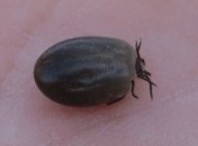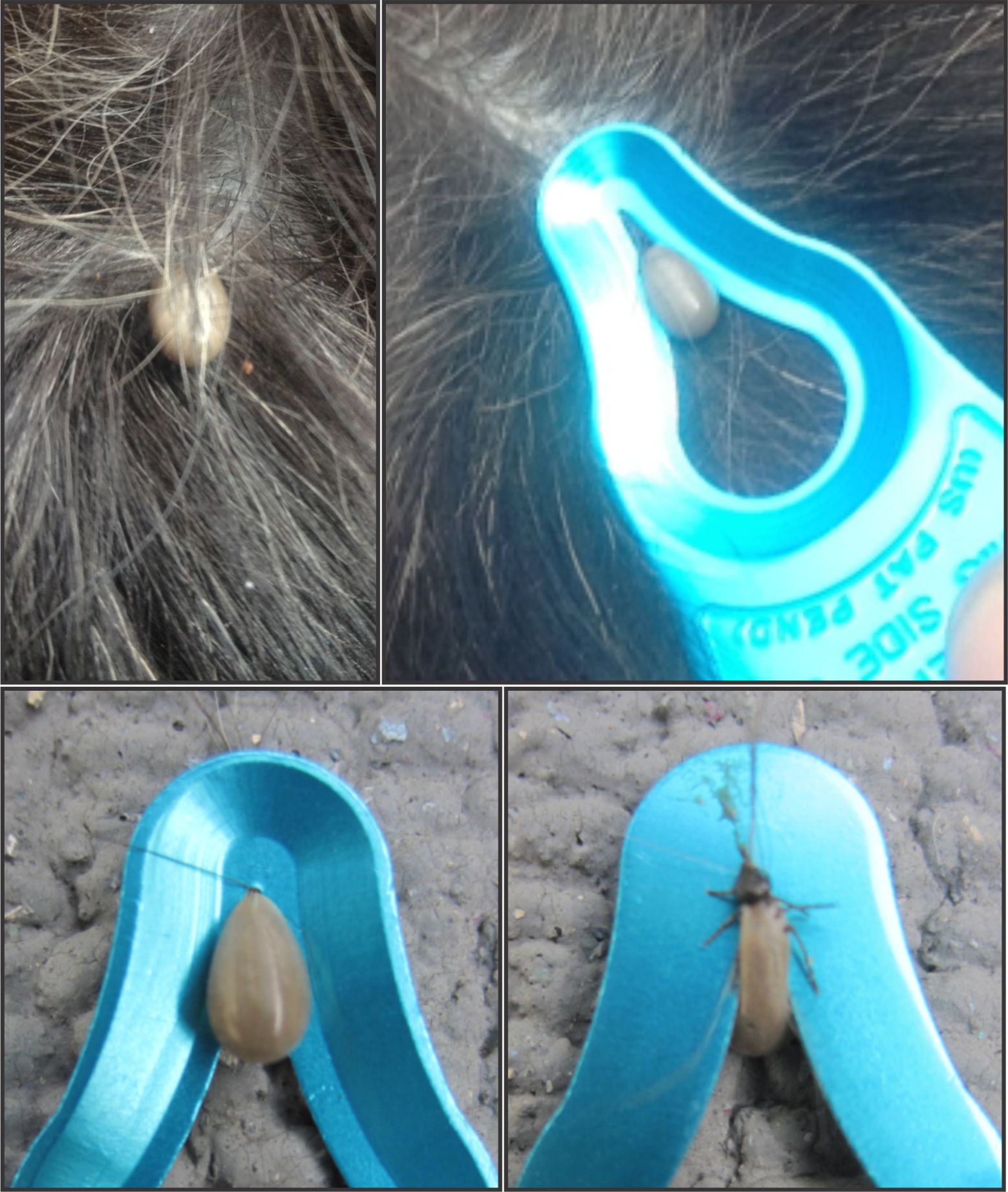Tick-Talk
May is Lyme Disease Awareness Month and was the inspiration for this week’s two-part blog. This blog article focuses on tick identification, removal and disease prevention. The second part of this week’s blog focuses on Lyme disease and tells Blue’s story. Blue, one of our rescued Rottweiler’s, tested positive for Lyme disease back in 2012. We have gained valuable knowledge and information throughout this process. By sharing Blue’s story, we hope that someone may benefit from what we have learned.

Tick removed from a dog
Wooded areas, long grasses, marshland and wildlife are all things that make life in the country great. The dogs love the very nature of our facilities and it gives them a chance to reconnect with their wild side. However, such an inspiring and diverse landscape has its down sides; it is the perfect environment for ticks. Ticks undoubtedly serve their purpose in the natural world but these unattractive little beasties cause quite a stir. Special attention should be paid to both dogs and people during tick season (May-Oct) as the number of diagnosed cases of Lyme disease is on the rise. Prompt identification and removal of ticks is essential in preventing tick-borne diseases.
About Ticks
Ticks are resilient ectoparasites that feed off blood by burrowing their mouthparts into their hosts’ skin. They often require several days to get a full blood meal which facilitates their development into the next stage of their 2-year lifecycle. In Ontario, it is most often the black-legged tick (or deer tick) that is responsible for transmitting the bacteria that causes Lyme disease. It is widely said that the chance of contracting Lyme disease increases after the tick has been feeding on a host for more than 12 hours. Therefore, it is very important to perform daily checks on your dog(s) and remove ticks immediately.

Tick being removed from a dogs neck
Tick Removal
The ultimate goal when removing a tick is to do it as quickly and cleanly as possible. Regardless of the tool you are using, the safest and most effective way to remove a tick is to do the following:
- Grasp tick close to the skin and, in one swift but steady motion, pull the tick away from the dog.
- Ensure tick is intact after removal and that the tick’s head didn’t detach and remain in the dog’s skin.
- Drop the tick into a small amount of rubbing alcohol which will serve to kill and preserve it, in case further testing is required. Do not toss the tick away or flush it down the toilet.
- Disinfect the bite with an antibacterial solution.
- Monitor the area for a couple of days.
Prevention
The most effective way to prevent your dog from getting tick-borne diseases is to control the tick population through regular grooming and daily inspections. After a romp through a field or wooded area, give the dog a thorough check and remove ticks promptly. The use of repellents, such as flea and tick medication, can also be an effective way to control the number of ticks your dog gets.
For more information on ticks, check out the Canadian Lyme Disease Foundation webpage.


[…] To learn more about heartworm, check out Keshet’s You Tube video on Heartworm Testing and Heartworm Preventatives. You can also find great information about tick identification and removal in one of our earlier blogs, Tick-Talk. […]